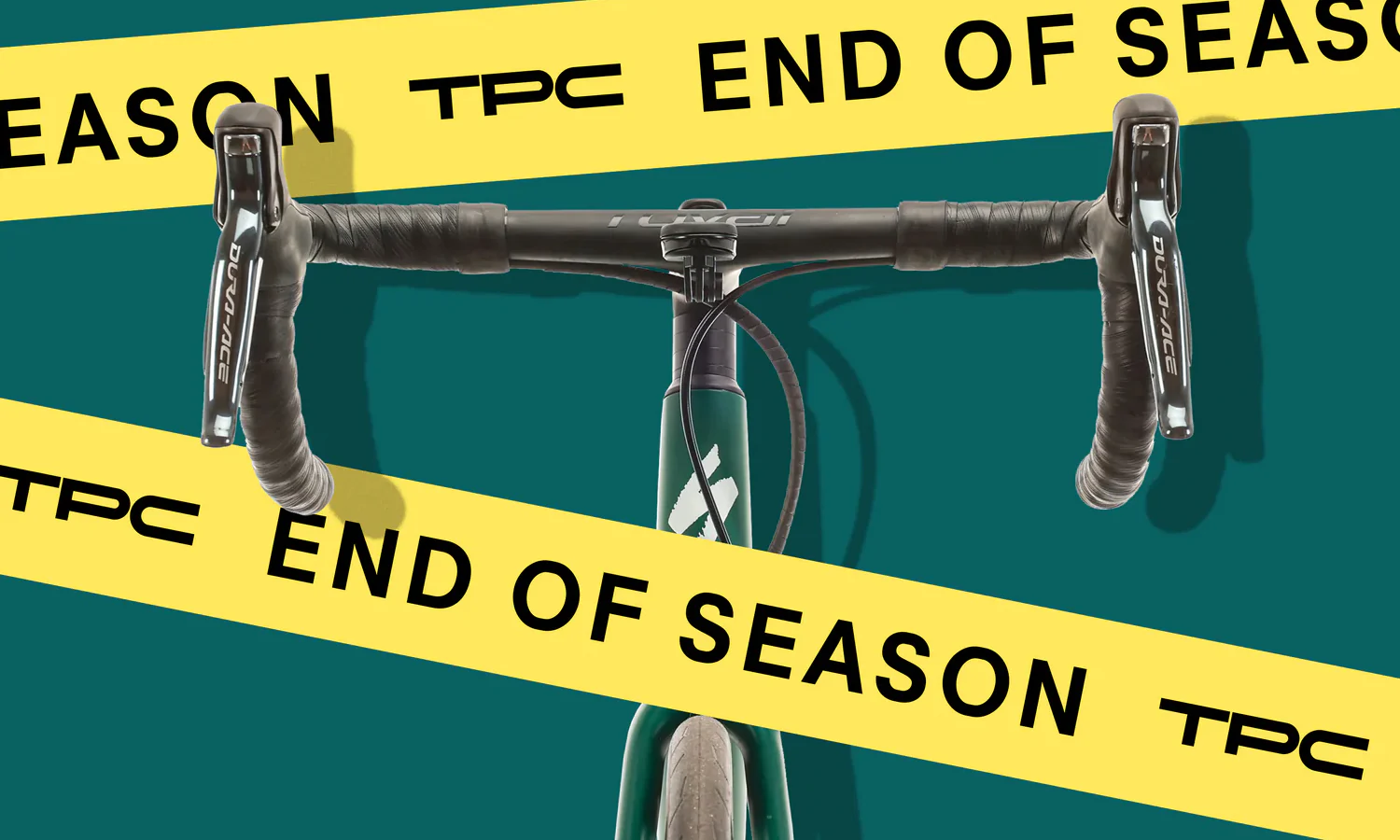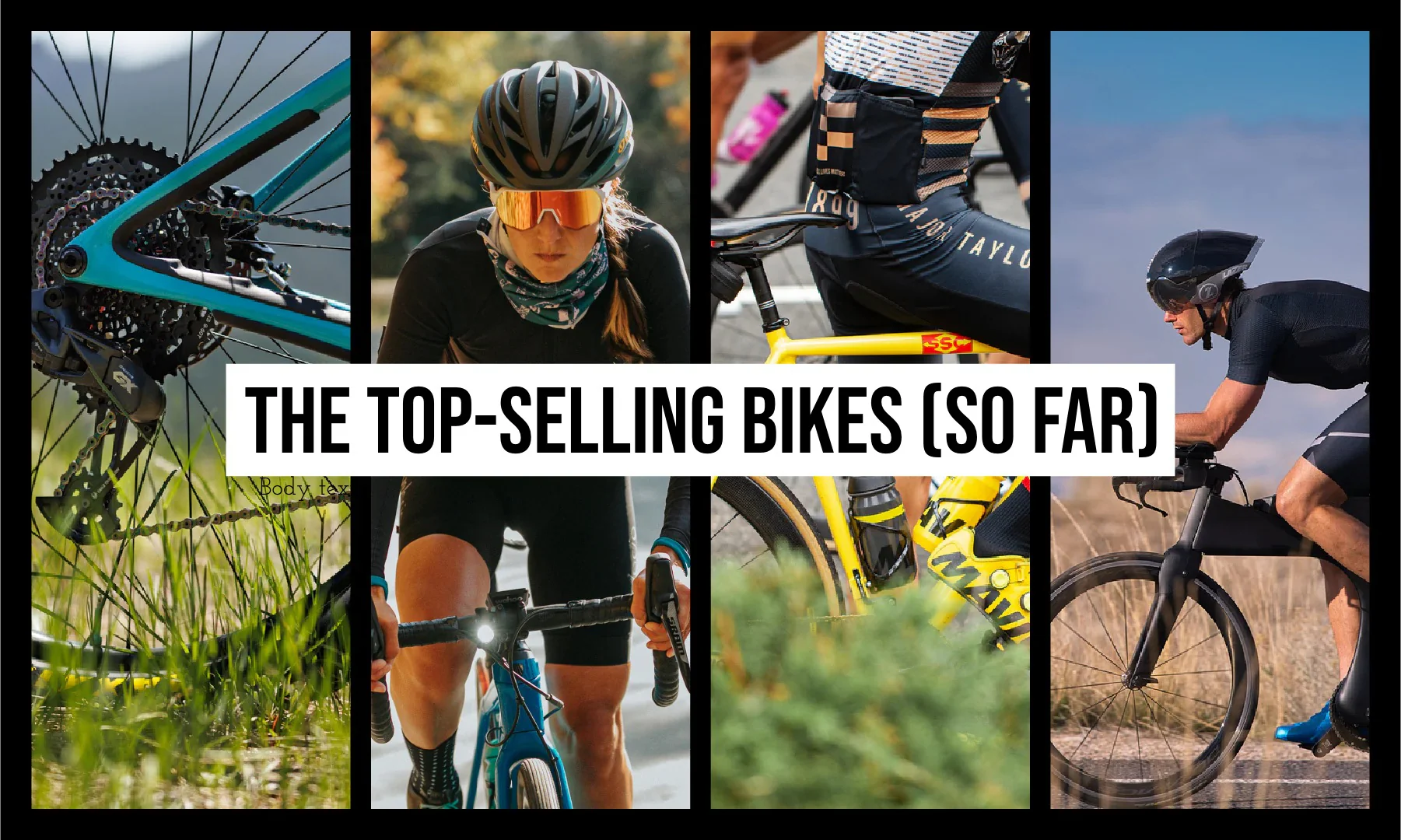When it’s time to clip in on a road bike, most riders choose between Look and Shimano pedals. These pedals have a lot in common but a few key differences. So how do you decide between them? Here’s what you need to know.
Look Brought Us Clipless Bike Pedals
Founded in 1951, this French company got its start in ski bindings. At the time, skis were typically attached to feet with laces. Look revolutionized this by creating the N17, the first ski pivot binding. This allowed for greater control, comfort, and safety when navigating the challenging Alpine slopes by being able to eject from the bindings with the twist, or pivot, of your ankle.
Fast forward a few decades and Look decided to bring its clip-in technology to the cycling world. In 1984, Bernard Hinault rode the first clipless road pedal to victory in the Tour de France, the PP65. Since then, Look has been revolutionizing the cycling world with its premier line of clipless pedals, enhancing every ride and pedal stroke.
Look Keo Clipless Road Pedal Guide
 Look created the first clipless pedal, the PP65, in 1984. This radical new design was based on Look’s ski bindings. Bernard Hinault used them to win his fifth and final Tour de France in 1985. The next year, Greg LeMond won riding Look pedals and it soon became clear that traditional toe-clips and straps were obsolete.
Look created the first clipless pedal, the PP65, in 1984. This radical new design was based on Look’s ski bindings. Bernard Hinault used them to win his fifth and final Tour de France in 1985. The next year, Greg LeMond won riding Look pedals and it soon became clear that traditional toe-clips and straps were obsolete.
 Left to right: Keo Classic 3, Keo Classic 3 Plus, Keo 2 Max, Keo Blade Carbron, Keo Blade Carbon Ceramic Ti.
Left to right: Keo Classic 3, Keo Classic 3 Plus, Keo 2 Max, Keo Blade Carbron, Keo Blade Carbon Ceramic Ti.
|
Pedal |
Price |
Weight |
Stack |
|
Keo Classic 3 |
$65 |
280g |
17.8mm |
|
Keo Classic 3 Plus |
$82 |
280g |
17.8mm |
|
Keo 2 Max |
$110 |
260g |
17.3mm |
|
Keo 2 Max Carbon |
$135 |
250g |
17.3mm |
|
Keo Blade Carbon |
$174 |
230g |
14.8mm |
|
Keo Blade Carbon Ceramic |
$252 |
230g |
14.8mm |
|
Keo Blade Carbon Ceramic Ti |
$400 |
190g |
14.8mm |
|
Keo Blade Carbon Power (single) |
$679 |
260g |
14.8mm |
|
Keo Blade Carbon Power (dual) |
$999 |
260g |
14.8mm |
Look’s current generation of pedals are called “Keo” and they come in three flavors: Classic, Max, and Blade. Keo Classic pedals are the entry-level option and use 60mm wide composite bodies, chromoly spindles, and stainless steel bearings.
The Keo 2 Max pedals upgrade to a lighter, hollow chromoly+ spindle, and add a larger stainless steel plate on the pedal body for more durability. Keo 2 Max pedals come with either a composite body or a lighter carbon body.
The Keo Blade is the top-of-the-line option favored by many pro riders for its aerodynamics and low weight. It has a wider 64mm carbon body for more support and reduces weight by using a carbon leaf spring or “blade” instead of a traditional wound steel spring. Higher-end versions use ceramic bearings and/or titanium spindles. Unlike other clipless pedals, spring tension is adjusted by swapping to stiffer carbon blades. Higher number blades equate to more tension. An 8 is stock. If you want more tension, Look recommends using 12 for regular riding, 16 for sprinters, and 20 for track cycling.
At 190 grams, the Keo Blade Carbon Ceramic Ti are among the lightest road pedals on the market. Weight weenies will love them, but the price is as extreme as the weight!
Look has also introduced a power meter version of the Keo Blade Carbon. This is a great option for riders who can't or don't want to add a power meter to their crankset or who want to swap their power meter pedals between multiple bikes. The Keo Blade Carbon Power is available in single-sided and dual-sided versions. Dual-sided power meters are great for data geeks or riders with serious muscle/leg imbalances, but most cyclists won't need anything more sophisticated than the single-sided version.
What Is Pedal Stack Height?
Before we move on, let’s quickly explain stack height. Stack height is how tall or thick the pedal and cleat are. It’s measured from the center of the pedal axle to the sole of your shoe. The taller this stack, the higher your saddle needs to be. Many serious riders like pedals with lower stack heights because it feels more efficient and stable when applying power.
Shimano SPD-SL Clipless Road Pedal Guide
 Japanese component giant Shimano, took inspiration from Look’s design and, in 1987, created its own clipless pedal, the Dura-Ace 7401. It originally used Look-style 3-bolt cleats, but Shimano later branched out and created its own designs. The 2-bolt SPD system came out in 1990 and went on to become the standard for mountain bikes. On the road side, Shimano's initial pedal design was called SPD-R, which had a 2-bolt cleat that didn't work well and ultimately wasn't very successful.
Japanese component giant Shimano, took inspiration from Look’s design and, in 1987, created its own clipless pedal, the Dura-Ace 7401. It originally used Look-style 3-bolt cleats, but Shimano later branched out and created its own designs. The 2-bolt SPD system came out in 1990 and went on to become the standard for mountain bikes. On the road side, Shimano's initial pedal design was called SPD-R, which had a 2-bolt cleat that didn't work well and ultimately wasn't very successful.
It wasn’t until the launch of the Dura-Ace 7750 pedal for the 2003 model year that Shimano finally introduced its 3-bolt SPD-SL system, which was developed with input from Lance Armstrong. Since then, SPD-SL has become Look's main clipless pedal adversary.
 Left to right: RS500, Tiagra, 105, Ultegra, Dura-Ace.
Left to right: RS500, Tiagra, 105, Ultegra, Dura-Ace.
|
Pedal |
Price |
Weight |
Stack |
|
PD-RS500 |
$65 |
320g |
16.5mm |
|
Tiagra PD-R550 |
$100 |
310g |
16.5mm |
|
105 PD-R7000 |
$150 |
265g |
16.5mm |
|
Ultegra PD-R8000 |
$200 |
248g |
14.6mm |
|
Dura-Ace PD-R9100 |
$280 |
228g |
14.6mm |
Shimano’s road pedals are all fairly similar in shape and design. Shimano doesn’t publish dimensions, but based on a couple of examples in my garage, the pedal bodies are all around 63mm wide. Entry-level PD-RS500 and Tiagra pedals use composite bodies while 105 and above pedals use lighter carbon composite bodies.
The main difference between models is weight. Higher-end pedals will use less material, shaving a few grams and reducing the stack height. One feature Shimano pedals have that Look pedals don’t is the option to swap to axles that are 4mm longer. These will increase the Q-factor for riders who need a wider stance due to physiological reasons.
Look Keo vs. Shimano SPD-SL cleats

|
Cleat |
Keo Black |
Keo Gray |
Keo Red |
SM-SH10 (red) |
SM-SH11 (blue) |
SM-SH12 (yellow) |
|
Float |
0° |
4.5° |
9° |
0° |
2° |
6° |
Both Look and Shimano adjust float using the cleat. Look’s Keo Gray cleat and Shimano’s SPD-SL SM-SH11 cleat are the standard cleats that come with new pedals (the exception is Dura-Ace which comes with the SM-SH12 cleat). Look’s Keo Red cleat provides significantly more float than Shimano’s SM-SH11 cleat. This may provide more relief for riders with knee pain or other fit issues. Both brands offer a 0° cleat for riders that want a more secure feel.
Look’s all-plastic cleats require some extra care when walking on smooth surfaces. (I’ve fallen over while walking into the grocery store.) If this is a concern, Look also makes a Keo grip cleat that adds anti-slip pads to the outside of the cleat to help with walking off the bike.
Shimano’s SPD-SL cleats all come standard with walking pads, and in my experience, SPD-SL cleats are much easier to walk in than Look Keo Grip cleats. The one critique I have of SPD-SL cleats is that the walking pads are wider than most cycling shoes and some riders don’t like how they protrude on the sides of their shoes.
Look vs. Shimano Pedals: Q-Factor
Look Q-Factor: 53mm
Shimano Q-Factor: 52mm
Some riders need or prefer road pedals that offer a wider Q-factor or pedaling stance. Both Look and Shimano offer options to increase the Q-factor of their pedals.
Look pedals have a slightly wider 53mm Q-factor out of the box compared to Shimano's 52mm. The pedal axles also have a longer threaded area that can accept up to 4mm of pedal washers. Standard pedal washers are generally 1mm in width, but Look also produces a black 2mm pedal washer that looks more discrete. The use of washers on Look pedals allows riders to increase Q-factor to 54-57mm. This is super easy, but some riders may find that using this many washers looks a bit ugly.
Shimano Ultegra and Dura-Ace pedals have the option to swap in a 4mm longer axle (this is not available on lower-end Shimano pedals) to increase Q-factor from 52mm to 56mm. Shimano pedal axles can also use pedal washers, but generally, it's not recommended to exceed 2mm of washers. This means Shimano Pedals can increase Q-factor to 54-58mm.
Look vs. Shimano Pedals: Reliability and Service
Both brands make extremely reliable pedals. I’ve heard stories of older Look pedals suffering from premature bearing wear, but it’s uncommon. My Keo 2 Max Carbon and Ultegra pedals are both over 10 years old. I have serviced each set several times, and I fully expect them to last another 10 years.
Servicing the pedals just requires cleaning and re-greasing the axle. Look pedals can be disassembled with a standard 19mm wrench. For reassembly, Look suggests using a specific Loctite instant adhesive on the threads. I’ve skipped this before without incident, but it’s good to follow instructions. Shimano pedals require a special pedal axle tool to disassemble, but it’s fairly inexpensive. In a pinch, I’ve loosened the axles with channel-lock pliers, but that could damage the pedals.
 Loctite 480 - $21.95
Loctite 480 - $21.95
Shimano TL-PD40 pedal axle-tool - $12.86
The one significant difference between Look and Shimano is the cleats. The SPD-SL design has worked extremely well since 2002. Look has revised its cleats a couple of times to improve issues with durability, walkability, and squeaking. I find that Look cleats also wear out faster than Shimano cleats from regular use and walking. You’ll know it’s time to swap them out when the outside is excessively worn, pedal engagement suffers, there’s too much lateral play, or the cleat becomes squeaky.
How to choose: Look vs. Shimano pedals
Both Look and Shimano pedals have wide, supportive platforms, a positive click when clipping in, and adjustable tension. I probably wouldn’t be able to tell Look and Shimano pedals apart if I were clipping in blindfolded.
Here’s my rundown of how to choose between Look and Shimano:
- Weight - Look pedals are consistently lighter than comparable Shimano pedals and provide a better gram-per-dollar ratio. For the weight weenies, the Keo Blade Carbon Ceramic Ti is the lightest pedal here. Winner: Look
- Appearance - Beauty is in the eye of the beholder, but I think Look pedals just look better. They have classier finishes, shapes, and logos, while Shimano pedals tend to look slightly generic. Winner: Look
- Stack height - If you’re a rider that likes having the lowest stack height possible, Shimano’s pedals are all lower than their Look counterparts. Winner: Shimano
- Float - If you need more than 6° of float, you’ll have to go with Look. But float is a personal choice so it really comes down to your needs. Winner: Draw
- Q-Factor - Looks make it easy to increase your Q-factor to 54-57mm with washers. If you need the widest stance possible, Shimano’s 4mm+ axles plus a couple of washers will be slightly wider at 58mm. Winner: Shimano
- Cleats - Even though I personally don’t like how SPD-SL cleats stick out from the sides of your shoe, I think they’re better for walking, last longer, and don’t develop weird squeaks. Winner: Shimano
- Brand affiliation - It always feels weird to finish off a beautiful SRAM or Campagnolo drivetrain with Shimano pedals. Winner: Look
Ultimately, both brands make great pedals and price and availability will probably be the final deciding factor. For riders who are getting serious about cycling, I recommend either the Look Keo 2 Max or the Shimano 105 pedals. They look good on any level of bike, are fairly lightweight, but cost significantly less than high-end models.
What I Use: Look Keo Blade Carbon Review (vs. Keo 2 Max)
So what pedals do I use on my own road bike?
 For the past 2 years, I've been riding (and loving) the Look Keo Blade Carbon.
For the past 2 years, I've been riding (and loving) the Look Keo Blade Carbon.
Before the Keo Blade Carbon, I rode the Shimano Ultegra R8000 pedals, and before those, I rode the Look Keo 2 Max Carbons. What are my thoughts? Well, to be completely honest, they all feel great. They've all been reliable. I have no complaints. If you blindfolded me, there's a good chance I wouldn't be able tell the difference when clipping in and pedaling.
One thing I'll mention is that both my Look pedals developed a bit of creakiness after a couple seasons of use, but it was easily remedied by swapping to new cleats. In my experience, compared to Shimano, Look cleats seem to require more frequent refreshes.
Why did I choose the Keo Blade Carbon? One point to mention is that my OCD tendencies make it feel "wrong" to use Shimano pedals on a bike with a SRAM drivetrain. If I had a Shimano drivetrain, then 100% I'd be riding Ultegra R8000 pedals right now instead.
I chose the Keo Blade for my bike because I was attracted to the low weight, aero qualities, and good looks. It's also the pedal used by one of my favorite riders, Tadej Pogacar, so there's that. Also, Look pedals make it super easy to simply add 3mm of spacers to achieve my desired Q-factor (this was determined using a Retul bike fit).
The Keo Blade Carbon is more expensive than than the Keo 2 Max. Is it worth the money? If you want the best of the best, sure. But the Keo 2 Max is still extremely good. One advantage it has is that the release tension is super easy to adjust. The Keo Blade requires changing out the carbon springs, which I found very finicky and difficult.
Really, I think it's hard to go wrong with any of these high-end pedals. If I'm being real, I'd just choose which pedal you think looks the best on your bike.
Shimano Ultegra R8000 vs. Look Keo 2 Max Carbon Pedals
|
Shimano Ultegra R8000 |
Look Keo 2 Max Carbon |
|
|
Weight |
248g |
250g |
|
Cleat Type |
SPD-SL |
KEO Grip |
|
Platform Width |
63mm |
60mm |
|
Release Tension |
Adjustable |
Adjustable |
|
Bearings |
Sealed |
Sealed |
|
Price |
$200 |
$135 |
If you considering a clipless pedal upgrade, the two most popular road pedals we sell are the Shimano Ultegra R8000 pedal and the Keo 2 Max Carbon. Many road riders looking upgrade from entry-level clipless pedals end up comparing these two super popular models.

Shimano Ultegra PD-R8000 Pedals Clipless
$81.99

Look Keo 2 Max Carbon Pedals Clipless Black
$137.00
In terms of total sales, the Shimano Ultegra is easily our best-selling road pedal, despite it being more expensive than the Look Keo 2 Max Carbon, which is still a close second. Both pedal far outsell all other models, including entry-level options, which I find quite interesting.
The main explanation for the increased popularity of the Ultegra pedal is the simple fact that Shimano Ultegra is the most common drivetrain found on mid-range to high-end road bikes sold in the last 10 years. Many riders simply match their pedals to their drivetrain.
Really, there's very little to chose between the two. Both pedals use carbon bodies and are very close in terms of weight. Both use a metal spring for retention (vs. the Keo Blade which uses carbon) which is robust and reliable, and the tension is easy to adjust. I own and ride both pedals. They feel very similar, and both are over 7 years old and still have 1,000s of miles left in them. The only issue I've ever had is squeaky cleats on my Looks, but swapping to new cleats always fixes it.
If the price difference isn't a factor, then aesthetics and brand loyalty are the only real deciding factors in my mind. You can refer to the "How to choose" section above to see some other factors to consider.
Photos courtesy of Look Cycle and Shimano.
























